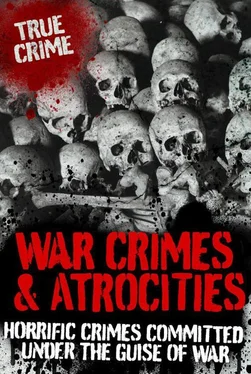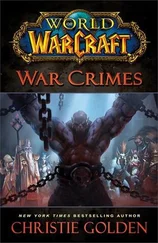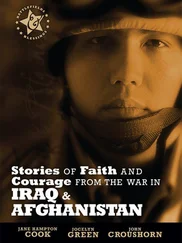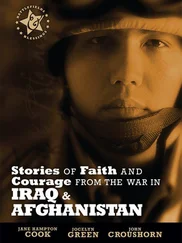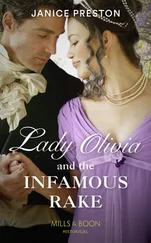At San Miguel, Pizarro heard that the Inca was not in his capital, Cuzco, but resting at Cajamarca, a town with hot springs much nearer than Cuzco. The way across the Andes to Cajamarca was difficult and dangerous, but on 24 September, 1532 Pizarro marched his small force out of San Miguel into the mountains to the heart of the Inca Empire. The march took seven terrible weeks, during which Atahualpa sent two embassies to welcome Pizarro to his kingdom and try to judge his intentions. These embassies threatened no violence and, indeed, seemed ready to treat the Spaniards with correct formality and hospitality.
When Pizarro and his men finally emerged from the high Andes on 15 November and made the relatively easy descent to Cajamarca, they found the town deserted. Atahualpa, his attendants and his army were a couple of leagues away in a tented settlement set up by the hot springs that had brought the Inca to the town in the first place. The town, a neat and orderly place with its steets and alleys laid out in straight, intersecting lines and with a triangular courtyard at its heart, had been handed over to Pizarro as a place for him and his men to stay in comfortably. Once settled in, Pizarro, having waited long enough for word from the Inca, sent a messenger with 20 horses to ask that the Inca visit him in the town.
Next day, Saturday, 16 November, 1532, Atahualpa told Pizarro that he would visit the Spaniard in the town. He said that he would come armed because the Spaniards had come armed to him the previous day. It was not until late in the afternoon that the Inca’s state procession appeared in front of the town. It was an impressive sight. First came a squadron of men in coloured livery, who swept the road in front of Atahualpa. Then came men in different costumes, some singing and dancing, others bearing large metal plates and crowns of gold and silver. Atahualpa’s litter was born by 80 officers, all richly dressed. The litter was lined with plumes and macaws’ feathers, and Atahualpa was seated on a gold throne covered with a feather-lined palanquin, richly clothed and adorned with gold and turquoise, as befitted the [divine] symbol of the sun god on earth.
This procession entered Cajamarca and proceeded to the central courtyard. There was no sign of the Spanish force. A priest holding a bible and crucifix confronted the Inca and made a long speech about the Christian faith. When this man had the effrontery to thrust the bible at Atahualpa, he rejected it.
It is possible that, as he sat on his litter high above the crowd of his people, the Inca actually saw the handkerchief dropped by Pizarro as a sign that his men should open fire. Their cannon, dragged across the Andes, began cutting swathes through the crowd in the courtyard, while the sharp sound of firing from the soldiers’ arequebuses combined with the pounding of the hooves of the charging cavalry raised a hellish storm of choking smoke and noise over the scene.
The ceremonial weapons carried by a few of the Inca’s men into Cajamarca were useless against the Spanish arms. The Inca’s men were butchered as they fought with their bare hands to save the Inca. Soon, every way of escape from the courtyard was blocked by the bodies of the fallen. Those remaining inside were hacked to bits by the Spanish soldiers, in the grip of a terrible bloodlust. Only the intervention of Pizarro and several of his officers saved the Inca. As the sun set and darkness fell, the Inca was led away in chains.
The Inca Empire collapsed. No effort was made to save the Inca, for there was no one with the authority to make the attempt. In the months that followed, while Atahualpa remained a prisoner of Pizarro, his empire was looted of its gold, silver and precious stones. Eventually, after a ‘trial’ that was in reality a farce, Atahualpa was sentenced to death by burning: his fate was to be a true auto de fe . When Atahualpa saw the stake and realized that his body was to be consumed by fire, which would damn him completely in his life after death, he agreed to become a Christian in return for being garrotted. The sentence was carried out on 16 July, 1533.
Ivan the Terrible Destroys Novgorod
1570

Ivan IV, the first ruler of Russia to take the title ‘Tsar of all the Russias’, was only three years old when he became ruler of the Russian state in 1533. Ivan was the grandson of Ivan III, called ‘the Great’ because he had rid Russia of the Mongols, united all the Russian principalities and states under his own rule and laid the foundations for the great state of Russia.
Ivan IV, who was born in 1530, came to the throne less than 30 years after Ivan III’s death. He inherited a country that was geographically ill-defined and racially disunited and was still a state in the making. Most of its influences – cultural, religious and social – as well as its most likely enemies, came from the Asiatic east and Byzantine south, not from Europe. So irregular, distant and ill-defined (and tinged with suspicion) was Russia’s relationship with Europe, that a 17th-century king of France wrote to a tsar of Russia not knowing that the man had been dead for ten years. Even the title ‘tsar’, was an Asiatic word, and the great Imperial double-headed eagle that Ivan III included in his emblem came from Byzantium.
Ivan IV spent most of his reign building on his grandfather’s work, establishing the Russian state on a more firm administrative footing, and subduing surrounding states, such as Astrakhan and Kazan, where 60,000 died during the siege and capitulation of the city of Kazan in 1552. He contributed much to his country’s cultural and commercial development. However, Ivan carried out much of this work, especially later in his reign, with such a savage, ferocious cruelty that even in his own time he was called ‘Terrible’, and it is as Ivan the Terrible that he still figures in Russia’s history.
Ivan’s childhood had not been a happy one. His mother, who acted as regent during his babyhood, was poisoned when he was eight years old, and responsibility for his care was taken over by a group of men from the ruling class, or nobility, called ‘boyars’, of whom Ivan lived in constant fear. From the time he grew to manhood and began his personal rule, Ivan the Terrible seems to have constantly suspected conspiracies against him everywhere. He always carried a long wooden stave, which he would lash out with when enraged, killing many people in his entourage.
THE OPRICHNINA
To control the Russian people, Ivan established a sort of secret police, or military force, called the Oprichnina, which he founded early in the years of his personal rule in a determined effort to eliminate all villains and traitors from his land. The Oprichnina operated through a corps of 6,000 oprichniki . These men, above the law, tortured, raped, murdered and looted from the people of Russia in their ferocious loyalty to the tsar.
Ivan was fanatically religious, spending hours on his knees in church (always after he had killed someone), and he saw the Oprichnina as something akin to the Spanish Inquisition. The oprichniki wore black garments like a monk’s robe and rode black horses, carrying a broom and a severed dog’s head on their saddles as symbols of their role as purifiers of the state.
A CITY MASSACRE
Among Ivan the Terrible’s many appalling actions, often ordered by him in fits of destructive rage and carried out by the oprichniki , the destruction of Novgorod and the massacre of the city’s citizens in 1570 stands out for its sustained cruelty.
Читать дальше
